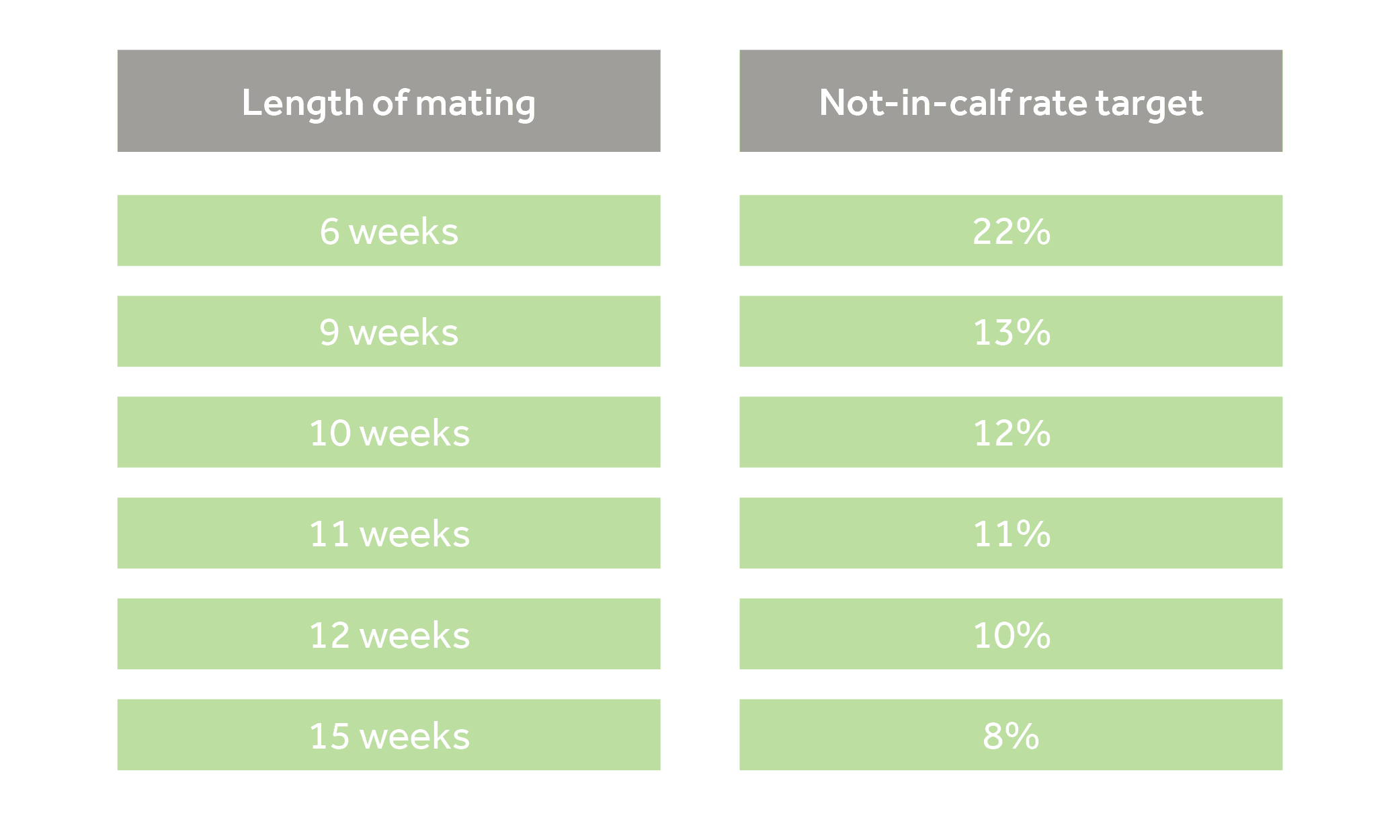REPRODUCTION
Reproductive performance is an integral part of the New Zealand dairy farm system. We need cows to get in calf efficiently each season as there is limited time between calving and mating. If cows calve early they recover earlier and can begin cycling again sooner - they're in a race against time. They get their first (least fertile) heat out of the way before mating starts. This increases their chance of getting back in-calf in the first six weeks of mating.
From the day a heifer calf is born, you control the factors that influence her future fertility and whether she gets in calf on time, every time. The ‘fertility for life’ cycle of that animal involves calf and heifer rearing; first mating, pregnancy and calving; subsequent matings, pregnancies, calvings; and, eventually, culling. Success will require your attention throughout the cycle.
Herd reproductive management is a complex topic that has a significant impact on other areas of dairy farm management. The principles that support a well-managed reproductive programme are consistent with other aspects of farm management.
The following benefits are associated with improved reproduction:- Fewer cows culled as empties allows increased culling of genuine low-producing cows, increases in herd size or a reduction in the number of heifer replacements required.
- Increased profit since earlier calved cows generate more milk income than later calved cows in most herds.
- More compact calving pattern with fewer late-calved cows, fewer empty cows and fewer cows requiring hormonal intervention.
- More cows getting in calf early in the AB period, providing more replacement heifers, or the potential for a shorter AB period.
- More AB heifers born early in the calving season which streamlines calf rearing and heifer management, allowing farm staff to focus on other tasks.
- Fewer days feeding dry cows and observing cows for calving problems.
Reproductive performance targets
6-week in-calf rate: 78%.
The 6-week in-calf rate tells you the percentage of cows in your herd that became pregnant in the first 6 weeks of the mating period. These cows will calve early in the calving period next year. Where artificial breeding (AB) is used for the first 3-6 weeks of the mating period, many or all these cows will be pregnant to an AB sire.
Six weeks makes sense because it represents two oestrus cycles, and the half way point through a 12-week mating period. At about week six the difference in how quickly cows are conceiving is most evident between herds.
The 6-week in-calf rate also captures both the drivers of in-calf rate – the 3-week submission rate and the conception rate.
Not-in-calf rate: relative to the length of the herd’s mating period, as outlined in the table below.

The not-in-calf rate tells you the percentage of the herd that failed to become pregnant during both the AB and bull mating periods.
Historically we used the ‘empty rate’ but an empty rate tends to only include the percentage of cows scanned and recorded as empty after pregnancy testing. It is not as helpful as it can differ from farm to farm depending on who was present at pregnancy testing time.
Having a gap between your performance and the targets represents:
- fewer early born AB calves;
- fewer days in milk in early lactation;
- more non-cycling cows at mating; and
- more empty cows at end of mating
Assess
Assess herd reproductive performance
Identify
Identify scope for improvement to previous years, to other herds and to what's possible.
Consider
Consider options for change and select the best option(s).
Implement
Implement the selected management option(s).
How to improve
Improving herd reproductive performance is a whole farm systems challenge, going on all year-round, not just at mating. There is no simple recipe for achieving good reproductive performance. Every farm is different and will require its own reproduction management plan.
Firstly, work with your veterinarian and farm advisory team to determine where the opportunities are for your farm, utilise your DairyNZ InCalf Fertility Focus Report and other reporting within your herd recording programme to identify areas to explore.
Refer to the InCalf Book and DairyNZ website for detailed information.
Where to start:
- Assess herd reproductive performance
- Identify scope for improvement to previous years, to other herds and to what's possible.
- Compare your performance to previous years, to other herds and to what's possible.
- Weigh up the benefits from increased herd reproductive performance.
- Consider options for change and select the best option(s).
- Weight up the costs of implementing each change.
- Implement the selected management option(s).
- Review the effects of these changes as part of your management cycle.
